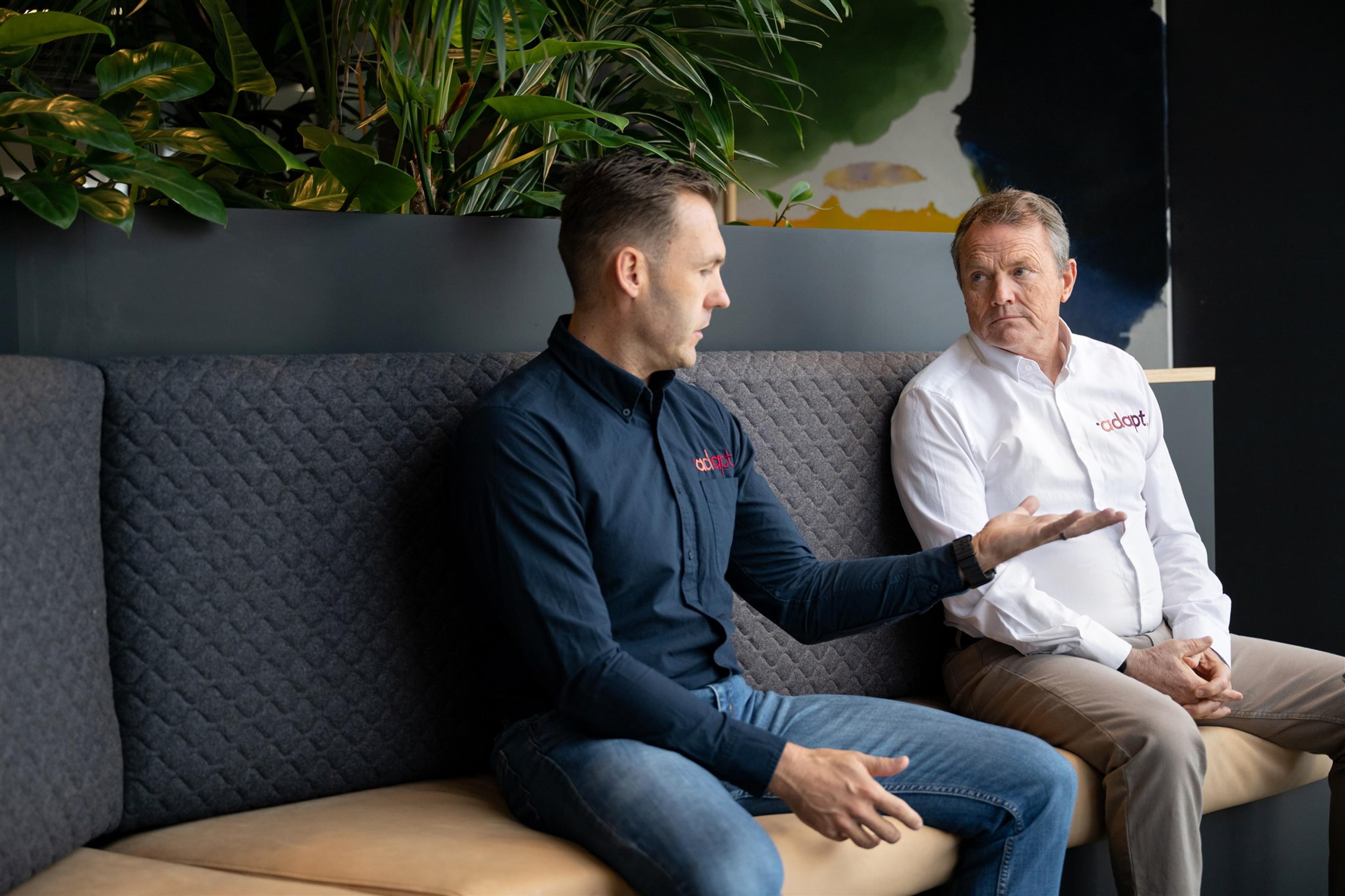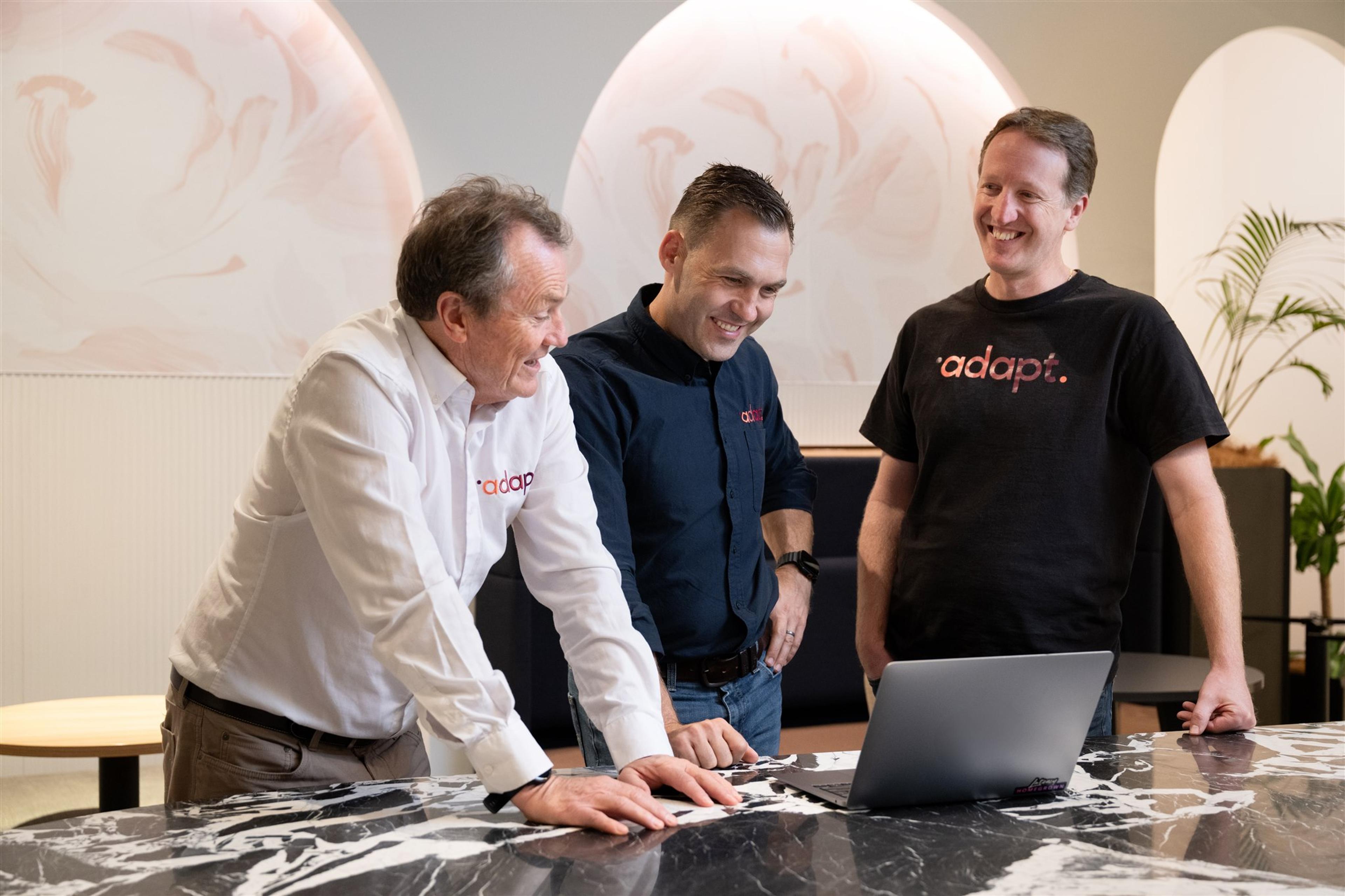The Five Principles of Succession Thinking™

Many SMEs struggle with long-term sustainability due to their over-reliance on the owner. Business owners often find themselves deeply embedded in daily operations, making it difficult to step back or transition leadership effectively. This lack of succession planning can lead to stagnation, limited growth potential, and a business that cannot function without its founder.
Without a structured plan for leadership transition, many SMEs become vulnerable to unexpected disruptions, such as economic downturns, industry changes, or personal circumstances affecting the owner. The absence of succession planning creates operational inefficiencies, where key decisions are delayed or bottlenecked at the top. As a result, businesses fail to build the internal leadership and systems needed to operate independently.
Traditional succession planning focuses on exit strategies, addressing leadership transition only when the owner is ready to step away. This reactive approach often leads to rushed transitions, misaligned leadership, and operational instability. In contrast, Succession Thinking™ is an ongoing approach that strengthens business resilience by embedding leadership development, systemisation, and strategic direction from the start. Instead of planning for an eventual exit, succession thinking guarantees that leadership and decision-making structures are built early, allowing smooth transitions and sustained growth over time.
By integrating Succession Thinking™, businesses can create a framework for scalability, efficiency, and long-term stability. Leadership becomes distributed across different levels of the organisation, making sure that decision-making is no longer dependent on the founder. Systemisation allows for knowledge transfer, consistency in operations, and greater adaptability to market changes.
This post will introduce Bill Withers’ Five Principles of Succession Thinking™, which provide a clear framework for creating a business that is independent, resilient and valuable. By implementing these principles, SME owners can reduce owner dependency, increase team accountability, and guarantee their businesses prosper beyond their direct involvement. This proactive approach ultimately leads to a more attractive business to investors, potential buyers, and future leaders, securing long-term sustainability and success.
The Problem With Short-Term Thinking in SMEs?
Many SMEs are built around a centralised decision-making model, where the founder controls every key aspect of the business. While this may work in the early stages, it becomes a major obstacle to long-term scalability and sustainability. Without a structured leadership succession plan, companies struggle to operate effectively when the founder steps back or exits.
Key issues that arise from this dependency include:
- Disruptive leadership transitions - When a founder suddenly leaves or scales back, the business lacks a prepared successor, leading to operational instability.
- Decision-making bottlenecks – Without a distributed leadership model, the organisation slows down as all decisions must pass through a single individual.
- Low employee engagement and empowerment – Employees may feel disempowered without structured leadership roles, leading to reduced initiative and accountability.
How Businesses Owners Get Stuck in Daily Operations
Many SME owners fall into the “owner-as-the-business” trap, where they take on multiple roles—CEO, strategist, sales leader, and operations manager. While this may seem necessary in the early stages, it eventually limits business growth and personal well-being.
Some of the most common struggles include:
- Burnout and decision fatigue - Managing every aspect of the business leads to exhaustion, reduced effectiveness, and difficulty focusing on long-term strategy.
- Scalability issues– The business cannot grow beyond the owner’s capacity, limiting its ability to expand or innovate.
- Knowledge and process gaps – Without documented processes, operational knowledge remains locked with the founder, making transitions difficult when leadership changes occur.
The Solution: Succession Thinking™ for Business Sustainability
Rather than waiting until an owner is ready to exit, Succession Thinking™ establishes that the business is designed to operate independently of any single individual. It provides a roadmap for sustainable growth by embedding leadership development, operational clarity, and cultural continuity from the start.
Key benefits of succession thinking include:
- Smooth leadership transitions - By preparing future leaders early, businesses ensure minimal disruption when changes occur.
- Stronger decision-making frameworks - Clearly defined leadership roles and structured processes enable more agile and efficient operations.
- Increased business value - Investors and buyers look for businesses with well-documented systems and leadership pipelines, making succession-ready SMEs more attractive.
By shifting from short-term, owner-dependent decision-making to a structured, forward-thinking approach, SME owners can future-proof their businesses and create a foundation for sustainable success.
The Problem With Short-Term Thinking in SMEs?
Succession Thinking™ is built upon five key principles that help businesses become self-sustaining and resilient. These principles create a framework that reduces reliance on the founder, facilitating smooth leadership transitions and operational consistency. Implementing these early on helps SMEs scale effectively, improve efficiency, and strengthen long-term business sustainability. These five principles form the foundation for building a resilient SME to sustain long-term growth and leadership transitions.
1. Seek Role Clarity
Why it matters:
SME owners often wear multiple hats—handling sales, finance, operations, and strategic planning. While this involvement may seem essential in the early stages, it quickly leads to inefficiencies, decision-making bottlenecks, and employee disengagement. Without clear role definitions, teams struggle to take ownership, and key decisions remain centralised with the owner, limiting business scalability and succession readiness.
How to implement:
- Differentiate key roles within the business—clearly defining the responsibilities of the owner, directors, and operational teams.
- Establish accountability structures by assigning ownership of critical business functions to senior leaders.
- Develop role clarity frameworks using organisational charts, process maps, and decision-making guidelines to empower teams.
2. Build Your Owners' Vision
Why it matters:
A clear and compelling business vision provides strategic direction and alignment across the organisation. Without a defined vision, SMEs risk inconsistency in decision-making, losing focus on long-term objectives, and creating a lack of clarity for employees and stakeholders.
How to implement:
- Align strategic goals with core values and purpose so that all decisions support the long-term vision.
- Involve key stakeholders—employees, leadership teams, and advisors—in shaping and refining the business vision.
- Communicate the vision consistently through internal messaging, leadership meetings, and company-wide strategy sessions.
3. Build Leadership Beyond You
Why it matters:
Many SMEs struggle because leadership is concentrated at the top, making it difficult to scale or transition smoothly when the founder steps away. A business that lacks a leadership pipeline remains vulnerable to instability, limiting long-term sustainability.
How to implement:
- Develop future leaders by identifying high-potential employees and investing in structured training, coaching, and mentorship.
- Encourage a distributed leadership model, where authority and decision-making responsibilities are delegated across the organisation.
- Create a succession roadmap outlining leadership development initiatives, key milestones, and transition strategies to prepare the next generation of leaders.
4. Build Culture Beyond You
Why it matters:
A strong organisational culture promotes engagement, retention, and alignment with the company’s long-term mission. Without cultural continuity, leadership transitions can disrupt internal cohesion, weakening the business’s identity and effectiveness.
How to implement:
- Establish a values-driven workplace where decision-making and behaviours reflect the company’s core principles.
- Develop a culture playbook that defines expected behaviours, leadership styles, and team dynamics to maintain cultural consistency.
- Embed cultural leadership into daily operations by upholding values through hiring practices, team development, and reward systems.
5. Build Your Business Way
Why it matters:
Documenting and systemising business processes supports continuity, efficiency, and scalability. Without structured operations, businesses become overly reliant on key individuals, making transitions difficult and growth unpredictable.
How to implement:
- Develop Standard Operating Procedures (SOPs) that outline critical workflows, reducing the reliance on any single person’s knowledge.
- Systemise decision-making using documented frameworks and governance structures that guide strategic and operational choices.
- Leverage technology and automation to improve efficiency, streamline repetitive tasks, and ensure seamless knowledge transfer.
How These Principles Build Business Resilience
Business resilience is built on structured leadership, a strong company culture, and systemised decision-making. When businesses integrate these principles, they are better equipped to handle leadership transitions, economic fluctuations, and industry shifts. The ability to function independently of the founder supports longevity and long-term success.
Ensuring Business Continuity Through Leadership & Culture
A business’s ability to sustain operations without the direct involvement of its founder depends heavily on leadership development and cultural continuity. Companies prioritising leadership succession and a values-driven workplace build a foundation for long-term resilience. Without these elements, businesses struggle to maintain stability and direction when leadership changes occur.
One example is a mid-sized manufacturing firm that successfully transitioned from solely relying on its founder to an organisation with a robust leadership structure. Initially, the founder handled all key decisions, from operations to sales strategy, making it difficult for the company to scale. Recognising the risks of this dependency, the company implemented a leadership development programme and instilled a culture of shared responsibility.
The firm distributed leadership capability across multiple levels of the organisation by embedding leadership training, mentoring, and decision-making frameworks into daily operations. Employees embraced the company’s vision and actively contributed to strategic initiatives, leading to a seamless transition when the founder stepped back. This proactive approach allowed the business to continue growing and adapting, unaffected by leadership changes.
A strong leadership and cultural foundation allows businesses to remain successful beyond the direct involvement of their founders. Companies that invest in leadership development early and foster a values-driven culture are more resilient in times of change.
How Structured Decision-Making Strengthens Business Sustainability
One of the most critical aspects of business resilience is the ability to make effective and timely decisions without bottlenecks. Businesses risk stagnation when relying too heavily on their founders for decision-making. Without a systemised approach, businesses risk slow responses to market shifts, inconsistent execution, and employee disengagement.
For example, a professional services firm initially operated with a highly centralised decision-making process. The founder approved contracts, hiring decisions, and client relationships. As the company grew, this model became unsustainable—delays occurred, and the leadership team lacked autonomy to execute efficiently.
To solve this, the firm introduced a governance framework that distributed decision-making authority across different leadership levels. By implementing clear accountability structures, standardising approval processes, and empowering department heads, the firm saw immediate improvements:
- Faster response times to market demands as leadership teams made decisions independently.
- Improved employee engagement as managers could lead without waiting for executive approval.
- Scalability and operational efficiency, leading to revenue growth and higher client satisfaction.
This approach demonstrated that business sustainability is not just about leadership transitions but also about creating a structured decision-making model that allows businesses to function effectively at all times.
Why Succession Thinking™ Increases Business Valuation
One of the key benefits of Succession Thinking™ is its impact on business valuation. Investors and potential buyers prefer businesses that are not dependent on one person. Companies with clear leadership pipelines, structured processes, and documented operational frameworks present significantly lower risks than those relying on their founders for daily decision-making. Businesses that adopt Succession Thinking™ early become more attractive to investors, increase their ability to scale, and position themselves as stable, low-risk enterprises in the market.
A tech startup initially struggled to attract investors because it was overly dependent on its founder. The company’s product development, sales strategy, and client relationships all revolved around a single individual, making it an unattractive investment due to its lack of scalability. Recognising this weakness, the company adopted Succession Thinking™ principles, including:
- Delegating leadership responsibilities across a senior management team.
- Documenting operational procedures to ensure continuity in product development and customer service.
- Embedding a leadership training programme to develop future executives from within.
Within two years, the company secured venture capital funding as investors saw a structured, scalable organisation with leadership independence. By reducing reliance on the founder and building a business model that could function without them, the company increased its valuation, attracted strategic partners and positioned itself for long-term expansion.
By embedding these principles, SMEs can strengthen their valuation, expand their growth potential, and position themselves as stable investment opportunities.
Practical Steps to Implement Succession Thinking™
A business that can operate independently of its owner requires a structured approach to Succession Thinking™. By embedding leadership development, decision-making frameworks, and long-term planning, SMEs can create a business that is sustainable, scalable, and attractive to investors. Below are four practical steps to effectively implement Succession Thinking™.
Step 1: Define & Document Your Business Way
A business that relies solely on the founder’s expertise and intuition risks losing knowledge when leadership transitions occur. To mitigate this, business owners must document processes, systemise decision-making, and create a knowledge base that allows the organisation to function smoothly without them.
How to implement:
- Identify key business processes and document them in detail to create a comprehensive operational playbook.
- Develop Standard Operating Procedures (SOPs) for daily tasks to maintain consistency across all business functions.
- Establish a centralised knowledge base that includes guidelines, decision-making frameworks, and procedural documentation.
- Use technology to streamline processes by implementing project management tools, automated workflows, and knowledge-sharing platforms.
By defining and documenting core functions, businesses can improve efficiency, reduce operational risks and facilitate smooth leadership transitions.
Step 2: Establish a Leadership Development Plan
Many SMEs struggle with leadership transitions due to a lack of prepared successors. Rather than waiting for an exit event to start grooming leaders, businesses should develop a leadership pipeline early so employees are ready to step into key roles when needed.
How to implement:
- Identify high-potential employees and provide them with mentorship, coaching, and structured leadership training.
- Encourage distributed leadership by delegating decision-making authority to department heads and team leaders.
- Create career progression pathways to show employees how to develop within the company.
- Invest in leadership education, such as external training programmes, workshops, and executive coaching.
Building leadership beyond the founder ensures that decision-making is decentralised, scalability is possible, and business resilience is strengthened.
Step 3: Embed Succession Thinking™ into Daily Operations
Succession Thinking™ should not be treated as a one-time initiative— it must become part of the company’s operational framework. Businesses that consistently reinforce accountability, ownership, and autonomy across teams build a culture of self-sufficiency.
How to implement:
- Encourage team accountability by assigning clear ownership of projects and decisions.
- Implement decision-making frameworks that empower employees to act without waiting for approval from the founder.
- Standardise governance structures, such as leadership meetings, advisory boards, and decision review processes.
- Foster a collaborative culture where knowledge-sharing and cross-departmental cooperation are the norm.
When Succession Thinking™ is embedded into everyday operations, businesses operate efficiently regardless of leadership changes, reducing disruption during transitions.
Step 4: Align Your Business with Long-Term Goals
Many SMEs operate with short-term priorities, reacting to immediate challenges rather than proactively planning for the future. A successful succession strategy aligns decisions with a long-term vision, driving sustainable growth.
How to implement:
- Regularly review business objectives to ensure they align with long-term growth strategies.
- Monitor key performance indicators (KPIs) to track leadership effectiveness and business sustainability.
- Adapt to industry trends and market changes by continuously refining processes, leadership structures, and business strategies.
- Create a transition roadmap outlining leadership handover plans, ownership shifts, and contingency plans.
By aligning with long-term goals, SMEs ensure strategic continuity, business scalability, and a clear succession pathway.
By following these four steps, SMEs can future-proof their business, achieve smooth leadership transitions and build a resilient company that stays strong beyond the founder’s involvement.
The Long-Term Benefits of Succession Thinking™
Succession Thinking™ goes beyond preparing for an eventual exit; it focuses on building a sustainable, high-value business that can function and grow independently of its founder. By embedding leadership development, structured decision-making, and operational continuity into the business, SME owners can ensure long-term resilience while reaping significant benefits.
1. Increases Business Valuation
A well-structured business operating without dependency on its owner is significantly more attractive to investors and potential buyers. Investors look for companies with clear leadership pipelines, documented processes, and stable operations, as these factors reduce risk and increase the likelihood of long-term profitability.
Businesses that implement Succession Thinking™ demonstrate the following:
- Leadership stability helps operations run smoothly even when key individuals leave.
- Scalability, as structured processes and leadership distribution, allows for expansion.
- Lower risk exposure, making the business a more investable asset for buyers, private equity firms, or potential successors.
A business not dependent on the founder is easier to sell, commands higher valuations, and attracts investment because it can function efficiently under new ownership or leadership.
2. Reduces Owner Burnout & Enhances Work-Life Balance
Many SME owners struggle with burnout because they take on too many responsibilities, believing they must oversee every business detail. This owner-centric model often leads to exhaustion, decision fatigue, and personal stress, making it difficult for the business to grow.
Succession Thinking™ relieves this burden by:
- Distributing leadership among a well-prepared team.
- Empowering employees to take ownership of decisions.
- Allowing the owner to focus on strategic planning rather than daily operations.
By implementing structured leadership succession, owners can step back without worrying about business performance. This flexibility allows them to focus on new opportunities, take extended breaks, or transition into an advisory role while the company continues to operate efficiently.
3. Create a Sustainable Business Model
A business built on Succession Thinking™ is designed to last beyond its current leadership team. Without structured succession, companies often experience disruption, stagnation, or even failure when key figures depart.
By embedding succession into the organisation’s DNA, businesses:
- Ensure continuity in leadership, culture, and operations even when transitions occur.
- Maintain consistency in customer service, product delivery, and strategic direction regardless of who is in charge.
- Create a resilient organisation that adapts to market changes without relying on a single leader.
Ultimately, succession planning keeps the business strong, making it valuable, scalable and operationally independent for the long term.
Key Takeaways
Succession Thinking™ focuses on preparing for an eventual exit while also creating a sustainable and resilient business that operates independently, scales effectively, and maintains long-term value. The five principles of Succession Thinking™ provide SME owners with a clear roadmap to help their companies remain successful beyond their tenure.
By embedding structured leadership development, cultural continuity, and systemised processes, business owners can reduce dependency on themselves, empower teams and increase business value. This proactive approach facilitates smooth leadership transitions, strengthens operational efficiency, and builds a workplace culture that sustains long-term success.
Future-proof your business and build a legacy that lasts.
Businesses that fail to plan for succession risk stagnation, loss of value, and disruption when key individuals leave. Companies that embrace Succession Thinking™ early establish a strong foundation for future growth and investment potential
Succession Thinking™ should be implemented early, not just when an owner is considering stepping away. The most successful SMEs plan ahead, develop strong leadership, and create structured processes that ensure business continuity.
To secure the future of your business:
- Start implementing succession strategies today to ensure resilience and long-term growth.
- Explore adapt's Succession Strategy services and discover how to build a business that stands the test of time.
- Learn more about SME resilience & leadership development to equip your team with the skills and mindset needed for sustainable success.




